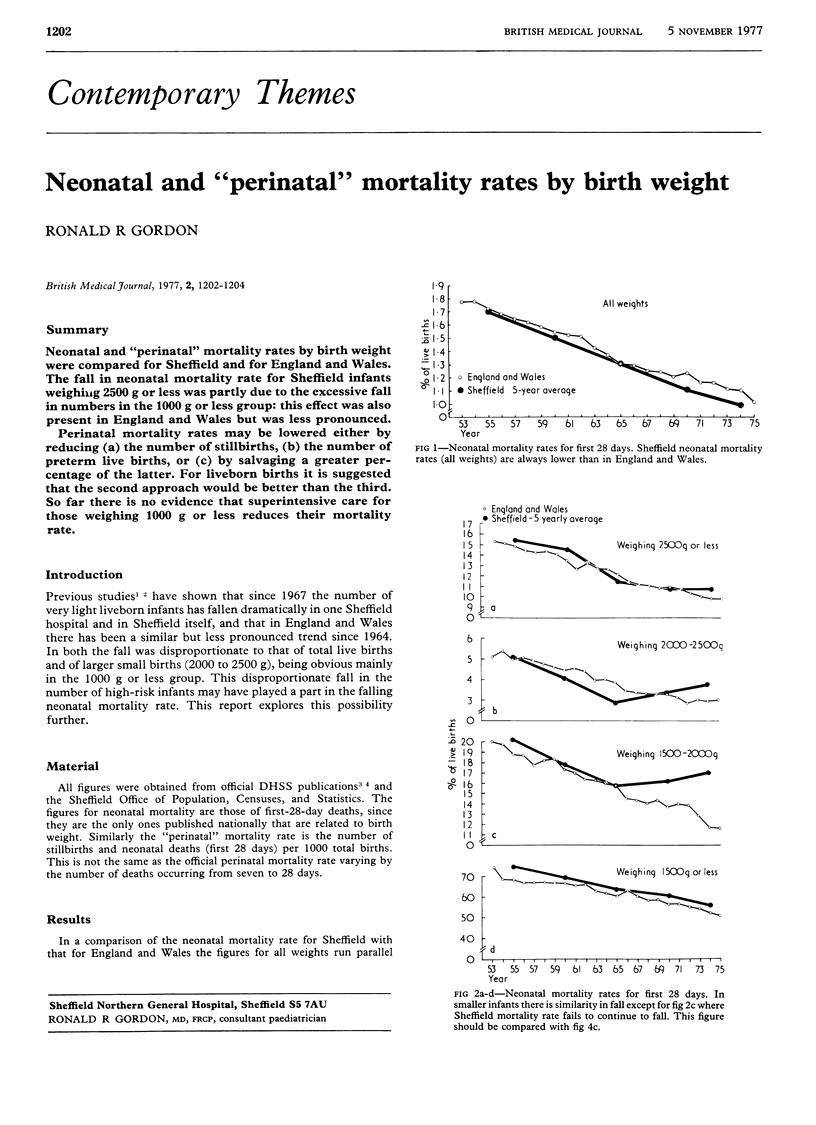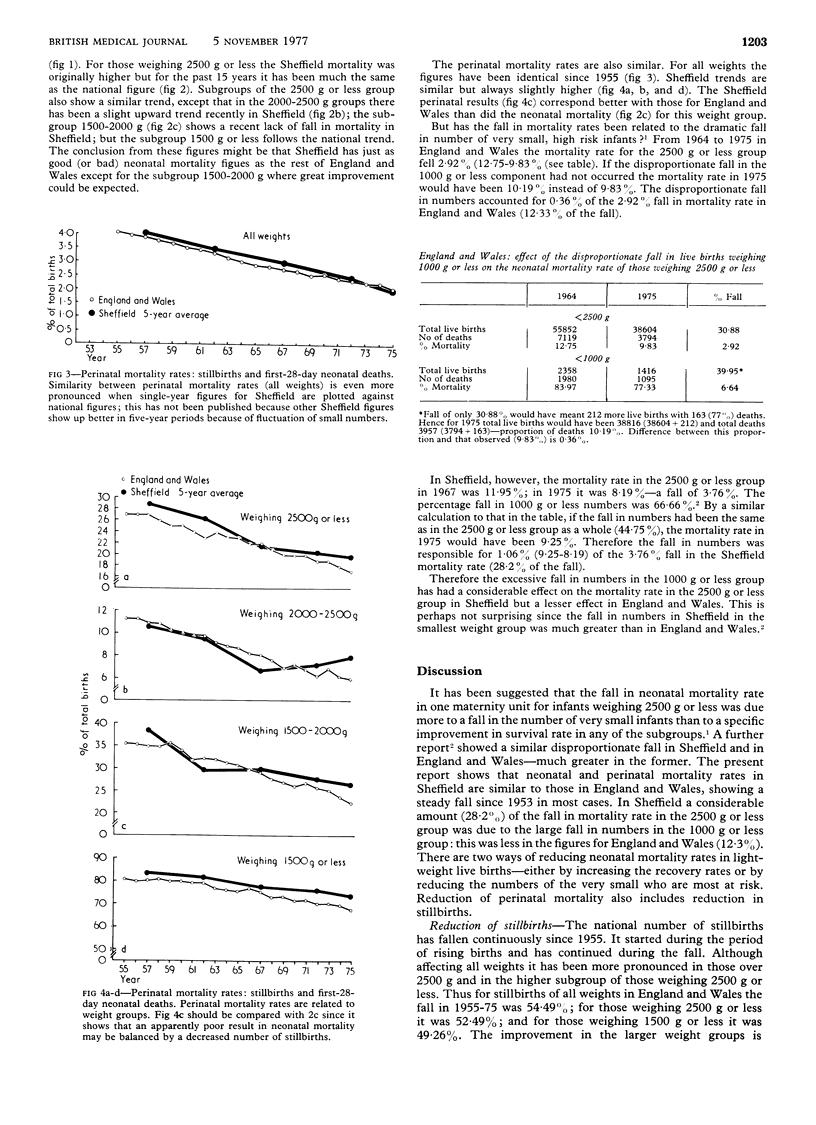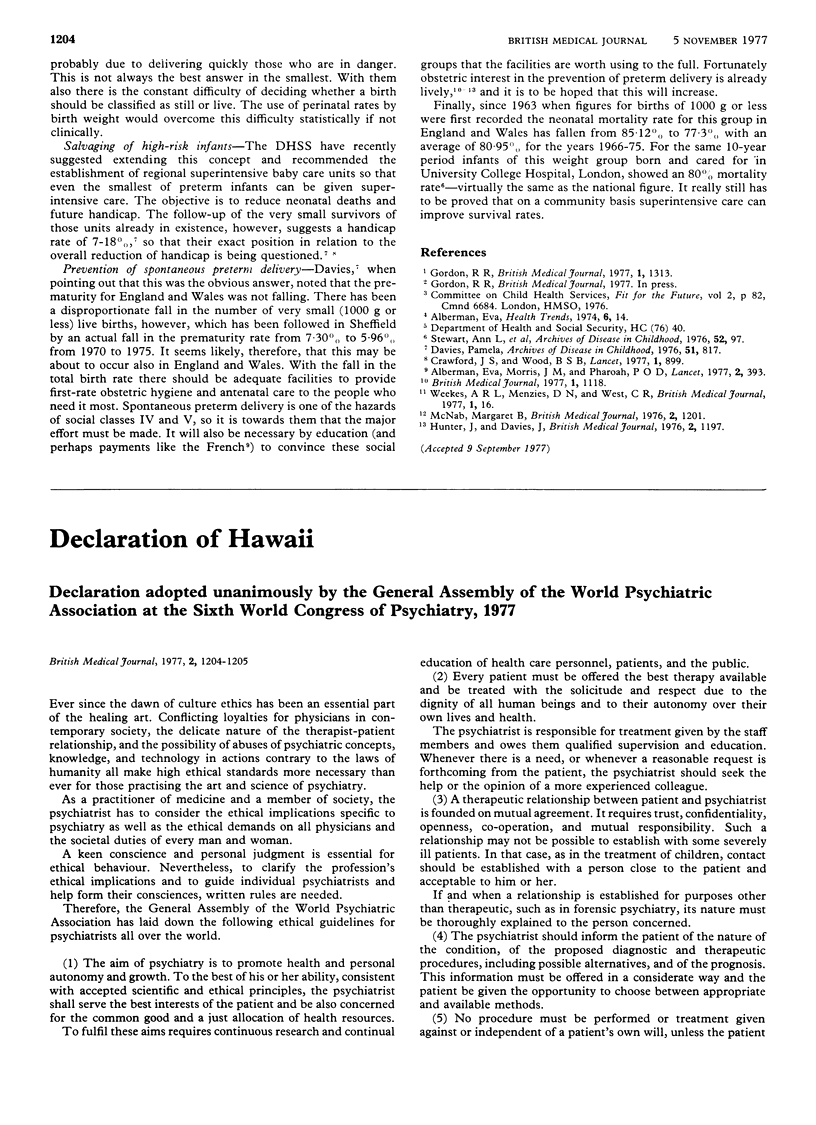Abstract
Neonatal and "perinatal" mortality rates by birth weight were compared for Sheffield and for England and Wales. The fall in neonatal mortality rate for Sheffield infants weighing 2500 g or less was partly due to the excessive fall in numbers in the 1000 g or less group: this effect was also present in England and Wales but was less pronounced. Perinatal mortality rates may be lowered either by reducing (a) the number of stillbirths, (b) the number of preterm live births, or (c) by salvaging a greater percentage of the latter. For liveborn births it is suggested that the second approach would be better than the third. So far there is no evidence that superintensive care for those weighing 1000 g or less reduces their mortality rate.
Full text
PDF


Selected References
These references are in PubMed. This may not be the complete list of references from this article.
- Alberman E. D., Morris J. N., Pharoah P. O. After court. Lancet. 1977 Aug 20;2(8034):393–396. doi: 10.1016/s0140-6736(77)90316-6. [DOI] [PMC free article] [PubMed] [Google Scholar]
- Crawford J. S., Wood B. S. Quality of survival and perinatal care. Lancet. 1977 Apr 23;1(8017):899–900. doi: 10.1016/s0140-6736(77)91216-8. [DOI] [PubMed] [Google Scholar]
- Hunter J., Davies J. Prematurity and neonatal death. Br Med J. 1976 Nov 13;2(6045):1197–1197. doi: 10.1136/bmj.2.6045.1197-a. [DOI] [PMC free article] [PubMed] [Google Scholar]
- Thom H., Johnstone F. D., Gibson J. I., Scott G. B., Noble D. W. Fetal proteinuria in diagnosis of congenital nephrosis detected by raised alpha-fetoprotein in maternal serum. Br Med J. 1977 Jan 1;1(6052):16–18. doi: 10.1136/bmj.1.6052.16. [DOI] [PMC free article] [PubMed] [Google Scholar]


